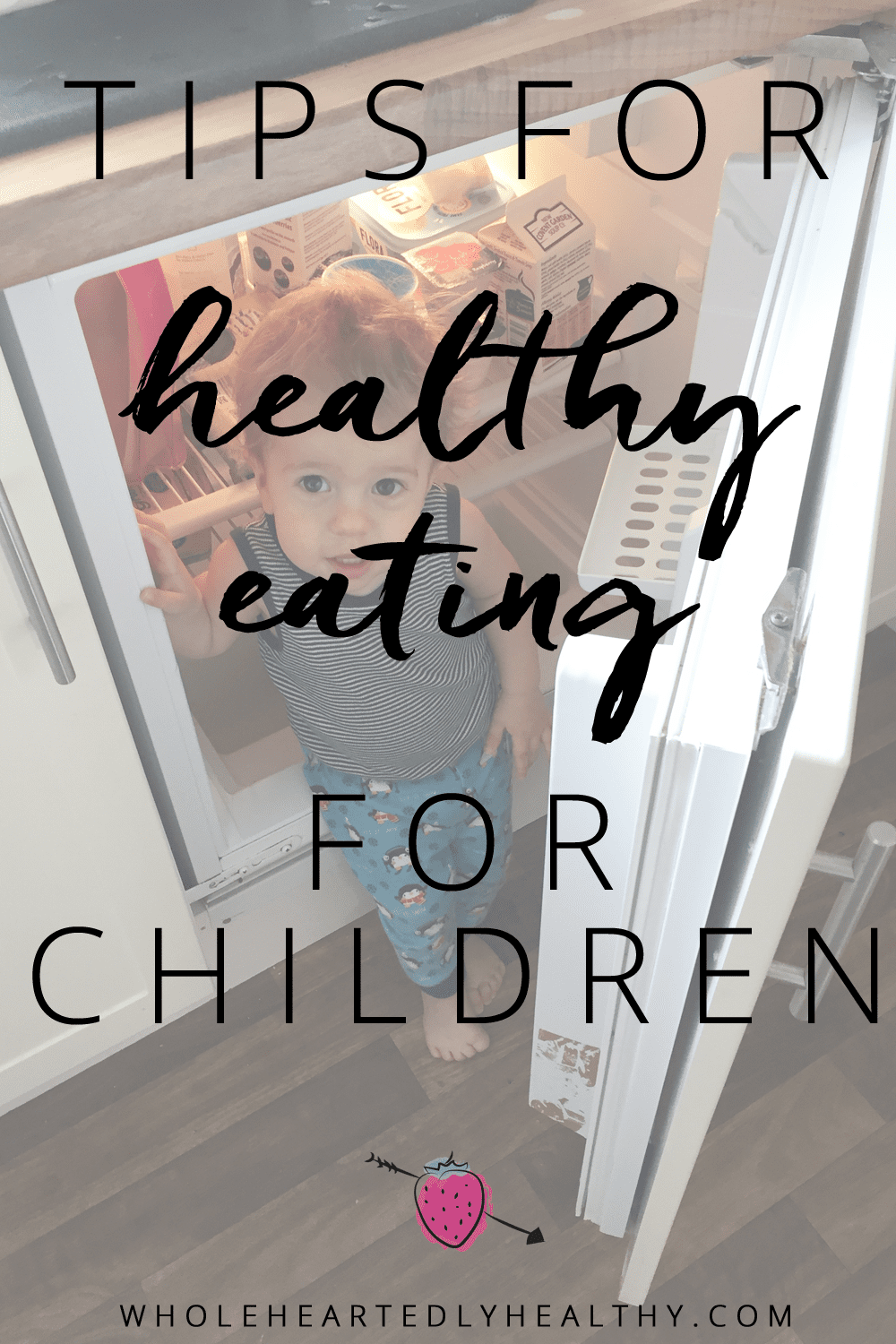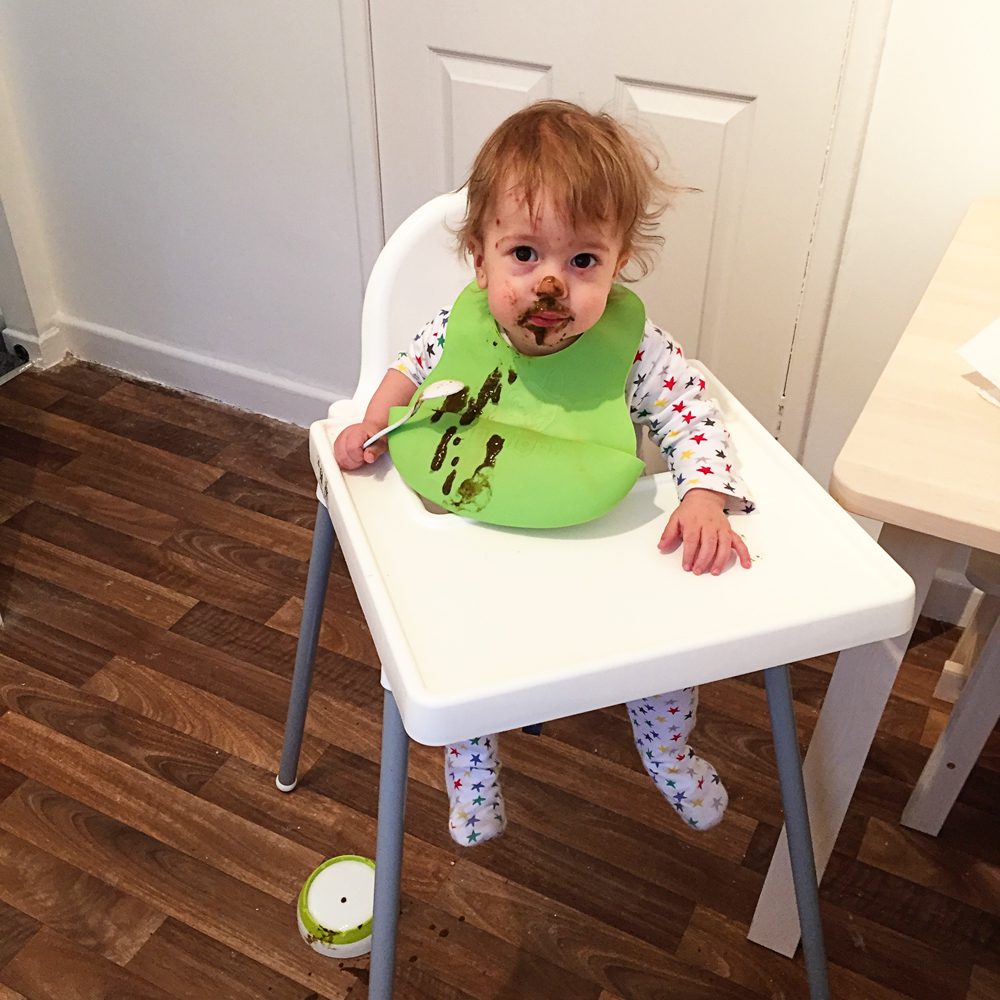

With Finley fast approaching his 2nd birthday he’s well into the toddler phase of development. Of course, ever since he was born, making sure he was getting nourished well has been really important to me, and I think on the whole I’ve done well. This post includes some of the recipes and foods I was feeding Finley at the weaning stage. However, general fussiness with foods has definitely become a recent trait, as is having a sweet tooth! What can I say, he takes after his Mama with that one! So whilst I’m certainly no expert, I wanted to post a few tips I have picked up around healthy eating for children, with my own nutrition knowledge and experience, including how to ensure they are becoming nourished, and also, how to bring them up to have a healthy relationship with food.
Try and make sure their diet is made up of mostly whole, unprocessed foods
I know this can be hard work, but really this is the foundation of healthy eating from my point of view. Try and skip any added sugar – cereals, yoghurts and biscuits can be the worst offenders. If they are going to have added sugar, then make sure it’s balanced out with other good healthy foods.
Include foods from all the food groups across the day (or week)
Allergies aside, making sure your kiddies are getting foods from all the main food groups is key. Guidelines from The British Nutrition Foundation suggest that young children should be getting 5 portions of starchy foods, 5 portions of fruit and vegetables, 3 portions of dairy foods and 2 of protein (3 if vegetarian) a day. This chart is brilliant for showing correct portion sizes and putting minds at rest in terms of how much they should be eating. Personally my experience with Finley, and the experiences of my close friends with their toddlers, is that their appetite can vary from day to day, so looking at things across a few days might give you a better picture of their balance, as should keeping an eye on their weight gain, growth and general signs of health.
It’s also worth noting that if you have chosen to practice extended breast feeding as I have, they might not eat loads. They still get a lot of nutrition from breast milk.
Remember, they are not adults and don’t need to lose weight
Children (arguably us all, but let’s save that convo for another day) need full fat foods and carbs for energy and brain development. No low fat yoghurts or any diet foods please!
Supplements
It’s now being recommended that we all supplement with vitamin D in the cooler months. You can get a great vitamin D spray from Better You which is easy to administer to littles. I’m also a huge fan of this multivitamin and probiotic powder from Zeta West that can easily be added to yoghurt or milk.


Offer a range of foods (even if they end up in the bin!)
I know how frustrating it can be to see your efforts end up in the bin, but sometimes you need to offer them foods several times before they’ll even try something. Even then, they can still be fusspots. I feel that offering them a wide range of foods and then offering them praise when they do try something (and never telling them off or being negative when they don’t eat it) is the best way to gently instil good eating habits over time.
Don’t make food an issue
When Finley was younger we had some weight gain struggles that made meal times anxious for me. I quickly realised that needed to stop. The most important thing for a healthy relationship with food is not to make it this big ‘thing’. I try and just go with the flow with Finley as much as possible. He knows when he’s full and when he’s hungry. If weight gain is a concern for you try fat-loading foods by adding coconut oil, olive oil or ghee to meals. Avocado should be a staple anyways!
Cook together and eat together as a family, the same meal if possible
Whilst you may not want to offer them some of your super hot curry, most ‘adult’ foods can be offered to young children past the baby years. Remember if they don’t eat it then at least they are being shown it’s normal to be offered that kind of food and to sit down as a family to eat it. Cooking together is another brilliant habit to get into, the earlier the better and it doesn’t just have to be cakes or biscuits, they can help cut fruit with a blunt knife under close supervision or can throw seeds over a salad, etc.
Communicate clearly with family and friends
This can be another toughie, especially grandparents who feed them sweets and then drop them off at home bouncing off the walls! Setting some boundaries as early as possible about what’s acceptable to you makes conflicts less likely later down the road. We have the benefit of having lived with my parents for a few months, so they could see how we choose to feed him and the things that are not currently acceptable to us like sweets, juice and MacDonalds.
Think first before you use food as a treat or reward
This is a tricky one because eating cake at your birthday or having an ice cream at the beach is all a beautiful part of growing up to me. However, many of us will know that associating food with emotions in that way can lead to issues further down the line. What I’d say here is just be especially careful of comforting them with food. We should all be encouraged to fully feel our feelings and deal with them, even the negative ones. Being a parent of course you want to make your child feel better, but holding that space for them to feel their feelings is more important in the long term. Plus cuddles can work way better than a cookie.
Watch how you treat yourself in front of your kids
It’s incredible how much children pick up watching us, so many of us might remember our mother dieting or passing up on certain foods. All of these kinds of behaviours can negatively impact children. Whilst you might want to eat well to lose weight, just keep in mind how that’s communicated to your children and never indulge in negative self talk (you shouldn’t ever!) but especially not in front of them.
When they just won’t eat healthily
Firstly, still offer them the healthier stuff even if they reject it. Most littles do like certain healthy foods, so focus on offering those you know they’ll eat. I always know that Fin will eat naturally sweetened yoghurts, cucumber and hummus, and fresh fruit. Something I do when Finley hasn’t eaten very balanced is make him a smoothie with spinach, cucumber or carrot (goes well with mango), fruit, full fat organic milk and some added fat like avocado or nut butter. Although I don’t want smoothies to become too habitual, sometimes they are just a good way of getting valuable vegetables into their bodies without too much fuss. Courgette and banana muffins sweetened with honey also go down well too!


Fussy kids can still grow into healthy, adventurous adults
I think it’s fair to say I was a very fussy child. I can remember only eating sugary cereals, tins of vegetable soup, toast and not much else. Now I’m probably one of the most adventurous eaters you’ll ever meet.
Don’t feel guilty
Often what food your children are eating – or rather not eating – can lead to a feeling of guilt, which unless you’re starving them or feeding them razor blades is probably not warranted! We all want the best for our kids and we all have limited time. I’m a fan of the organic ranges of kids meals and snacks you can get in the supermarket as a back up for when I’m less organised, although it took a while for me to let go of that picture of perfection I had in my head around the mother I wanted to be. Once I did, and let go of the guilt I was able to just get on with it and know that my son was being nourished to the best of my ability.
Wellness foods that kids love
I’m talking quinoa, chia seeds, coconut oil, cinnamon, avocado and more. Many of the ‘trendy’ foods we enjoy are great options for kids because they offer them a bit of a nutritional boost. I love quinoa and chia seeds for Finley as they offer him a little more protein as he’s not a fan of meat or eggs unless the eggs are in banana or sweet potato pancakes.
I hope some of these tips have been helpful for you and your littles!
If you have younger children, what are their favourite foods? Do you struggle to get them to eat healthily?



A very interesting post. At school we find that peer pressure works wonders- children often try things (un prompted) that their parents tell us they don’t like, but when they see all of their friends eating it, they try it. On a side note, I am sure there are signs at our local children’s centre about free vitamin D drops- for pregnant mothers and babies (not sure how old they go up to) but might be worth a look.
Love that portion chart. Really reassuring and I agree (as usual!) with your other points especially the eating together one. Thanks Laura.
Some fantastic advice here Laura. I’m rather concerned about the foods our child/ren will get from Grandparents. My parents eat fairly balanced meals, although regularly have unhealthy treats around mealtimes. My parents-in-law regularly live off frozen food and quick fix energy boosts. I wouldn’t be happy with my child coming back high on sweets, chocolate and chips each time they visited. I’ve still got a little way to go before it becomes an issue yet though!
I really like your point about not using food as a treat too. There are lots of other ways to reward.
Great article. From my experience, most people who concentrate on healthy eating tend to forget that keeping oneself hydrated is really important. Here’s an article that looks into that: http://whatishealthy.info/topic/10-dehydration-a-fast-route-to-short-life/
What do you think of products like museli with no added sugar? mixed with nuts and some dried fruit? Not everyday but sometimes saves me from cooking for breakfast.